Get the facts about AFib
Did you know that strokes are the most common complication of AFib?1
The risk is real. But fear of stroke doesn’t have to rule your life.

Please be informed that in some EU countries (Bulgaria, Cyprus, Estonia, France, Greece, Hungary, Ireland, Italy, Latvia, Lithuania, Luxembourg, Malta, Poland, Portugal, Romania, Slovakia, Belgium, Netherlands, Slovenia and Spain) medical device advertisements to general public is not permitted. Therefore, if you are accessing this website from one of those countries and you are not a healthcare professional, you need to exit this site immediately, since you would be viewing information that may not be legally allowed under the laws of your country of residence. Should you disregard this warning notice, Boston Scientific declines any liability as to your access to such information. By clicking accept you confirm your understanding and acceptance of the statements of this disclaimer.
Did you know that strokes are the most common complication of AFib?1
The risk is real. But fear of stroke doesn’t have to rule your life.
with AFib will have a stroke in their lifetime2
in people with AFib vs. people with a regular heartbeat1
with AFib taking a blood thinner would be willing to try a different treatment to reduce stroke risk3
Atrial fibrillation, also called AFib or AF, is a common kind of irregular heartbeat. Learn about types of AFib, symptoms and risks, and treatment for AFib, below.
There are two main types of atrial fibrillation: valvular and non-valvular. While valvular AFib is caused by a heart valve problem or condition such as narrowing , repair or replacement, non-valvular AFib (NVAF) refers to atrial fibrillation that is not caused by a heart valve problem and is the most common type of AFib.1,2
Treatment options may be different for non-valvular and valvular atrial fibrillation, but the effects of the disease are often the same.1,2
To better understand these effects, it’s helpful to know a little about how your heart works.
People with AFib may experience one or more of the following symptoms3:
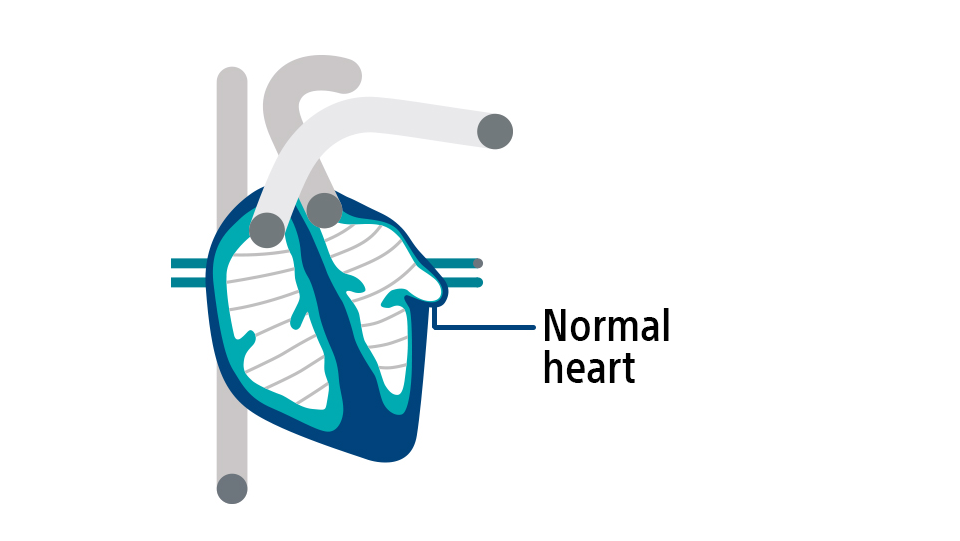
Your heart has an electrical system that controls the rate and rhythm of your heartbeat. In a healthy heart, the electrical signals produce a steady heartbeat and blood pumps normally.4
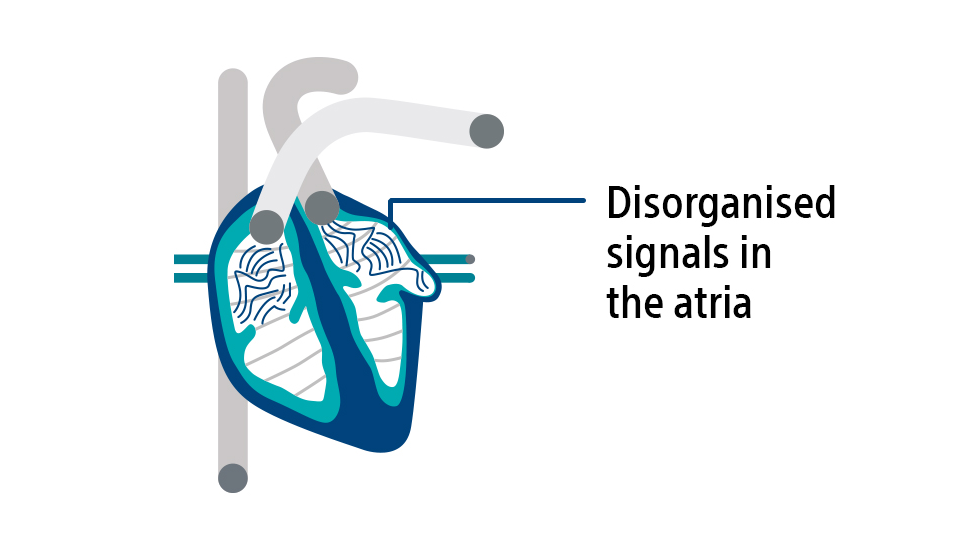
In atrial fibrillation (AFib), the electrical signals are disorganized and the top two chambers of the heart, the atria, beat rapidly and irregularly (fibrillate).4
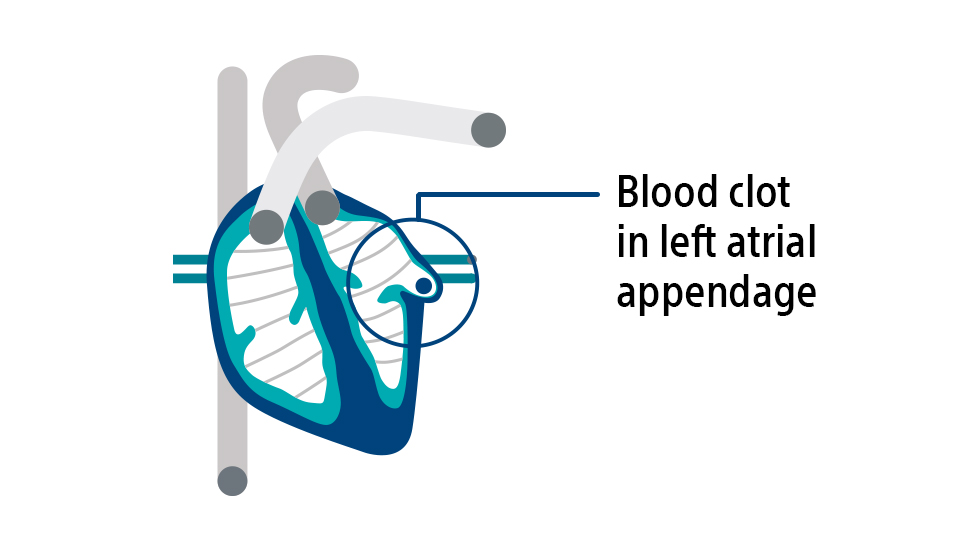
Because blood isn’t pumped out of the heart normally, it’s easier for blood cells to stick together and form clots in an area of the heart called the left atrial appendage (LAA).5 If a blood clot escapes, it can travel through the bloodstream to the brain and cause a stroke.4,5
The most common treatment for managing AFib-related stroke risk is the use of anticoagulants, such as vitamin K antagonist (VKA) and novel oral anticoagulants (NOACs).
Warfarin and NOACs effectively reduce the risk of cardioembolic stroke, however they are not well tolerated by some patients and carry a risk for bleeding complications.
Ready to leave blood thinners behind?
WATCHMAN Implant is a safe, one-time alternative to blood thinners to reduce stroke risk.
The WATCHMAN Implant device reduces the risk of stroke by closing off the left atrial appendage in the heart, where more than 90% of stroke-causing clots are formed.2
Please talk with your doctor about the risks and benefits of the WATCHMAN Implant.
If you’ve recently been diagnosed with atrial fibrillation, or if you’ve had symptoms of AFib, here are some questions to ask your cardiologist:
If you’re already being treated for AFib and you need an alternative to blood thinners, find out if WATCHMAN could be right for you.
For people taking blood thinners, everyday small cuts can turn into a big bleeding event. Hear what these people feared on blood thinners and why they chose the WATCHMAN Implant to reduce AFib-related stroke risk.
AFib can happen when there are changes or damage to the heart tissue or the electrical system of the heart.2
Several factors can increase the risk of developing AFib, including: 2
There are different ways to treat atrial fibrillation depending on your symptoms and the information gathered from your diagnostic tests. Your doctor will discuss the options with you and help you decide what treatment is the most appropriate for your condition and your lifestyle.
If you’ve been diagnosed with AFib, there are several treatment options available to reduce your risk of stroke and manage symptoms.
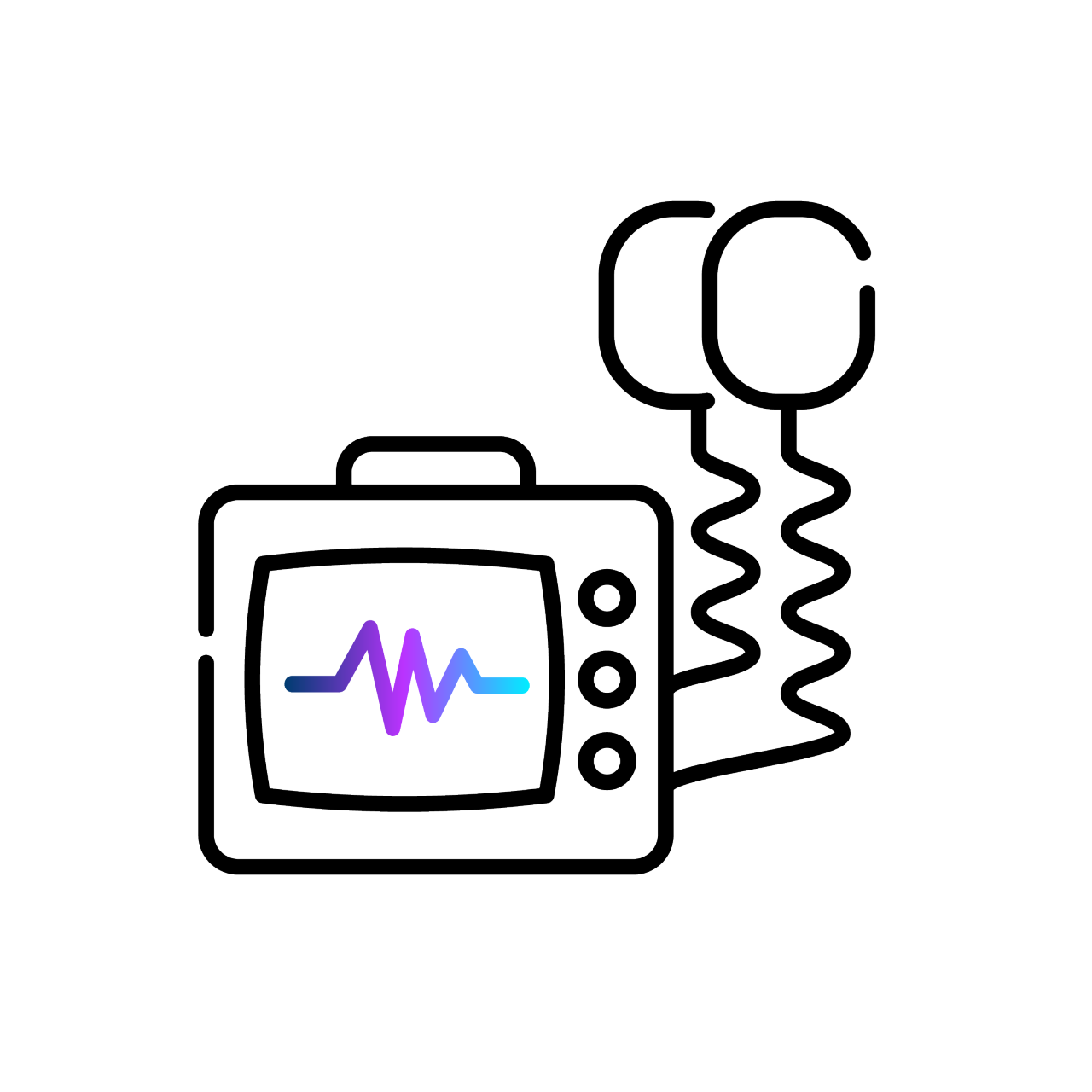
Cardioversion can be a scheduled procedure or used in emergencies.
It involves delivering low-energy shocks to the heart in order to quickly restore a normal heart rhythm. Cardioversion can also be conducted with medication. While the risks are low, cardioversion is not generally a long-term solution.
Drug therapy is often the first course of treatment for atrial fibrillation. A variety of different drug treatments are available, which fall into two main types:
Your doctor will assess how well you tolerate the drugs, how they impact your lifestyle and how well they are controlling your atrial fibrillation and risk of stroke. This will help determine if they are a satisfactory treatment for you or if a different approach should be considered.
Blood is pumped from the left upper chamber of the heart (left atrium) to all parts of the body, including the brain. The left atrial appendage is the part of the heart where blood can pool and clot if the upper chambers (atria) of the heart are not contracting properly. By closing off this „clot-making reservoir“, the risk of stroke is significantly reduced and the need for long-term blood-thinning drugs can be avoided.
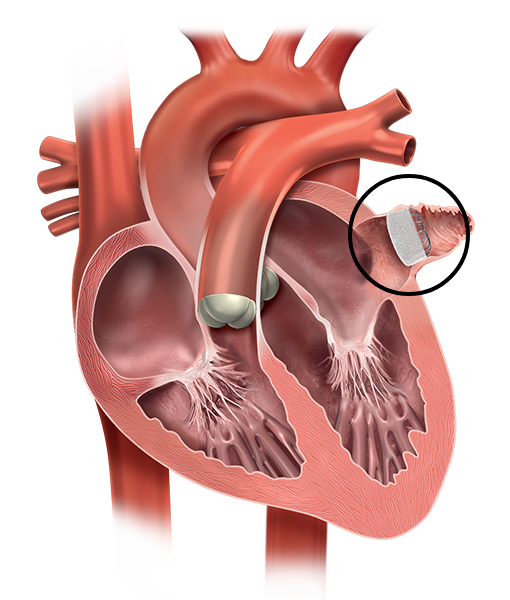
The FARAPULSEᵀᴹ PFA system has been specifically developed to offer a next-generation ablation method with excellent precision and accuracy.

References:
1. Noubiap JJ, Tang JJ, Teraoka JT, et al. Minimum National Prevalence of Diagnosed Atrial Fibrillation Inferred From California Acute Care Facilities. J Am Coll Cardiol. 2024 Oct 15;84(16):1501-1508.
2. Atrial Fibrillation Causes and Risk Factors. National Heart, Lung, and Blood Institute website. Updated November 30, 2022. Accessed March 6, 2025. https://www.nhlbi.nih.gov/health/atrial-fibrillation/causes
3. What Are the Symptoms of Atrial Fibrillation? American Heart Association website. Updated March 27, 2023. Accessed March 6, 2025. https://www.heart.org/en/health-topics/atrial-fibrillation/what-are-the-symptoms-of-atrial-fibrillation-afib-or-af
4. Treatment Options for Atrial Fibrillation. American Heart Association website. Updated March 27, 2023. Accessed March 6, 2025. https://www.heart.org/en/health-topics/atrial-fibrillation/treatment-and-prevention-of-atrial-fibrillation/treatment-options-of-atrial-fibrillation-afib-or-af
5. Atrial Fibrillation (Afib). Cleveland Clinic. Available at: https://my.clevelandclinic.org/health/diseases/16765-atrial-fibrillation-afib. Accessed June 10, 2024.
CAUTION:
The law restricts these devices to sale by or on the order of a physician. Indications, contraindications, warnings, and instructions for use can be found in the product labelling supplied with each device. Products shown for INFORMATION purposes only and may not be approved or for sale in certain countries. This material not intended for use in France.